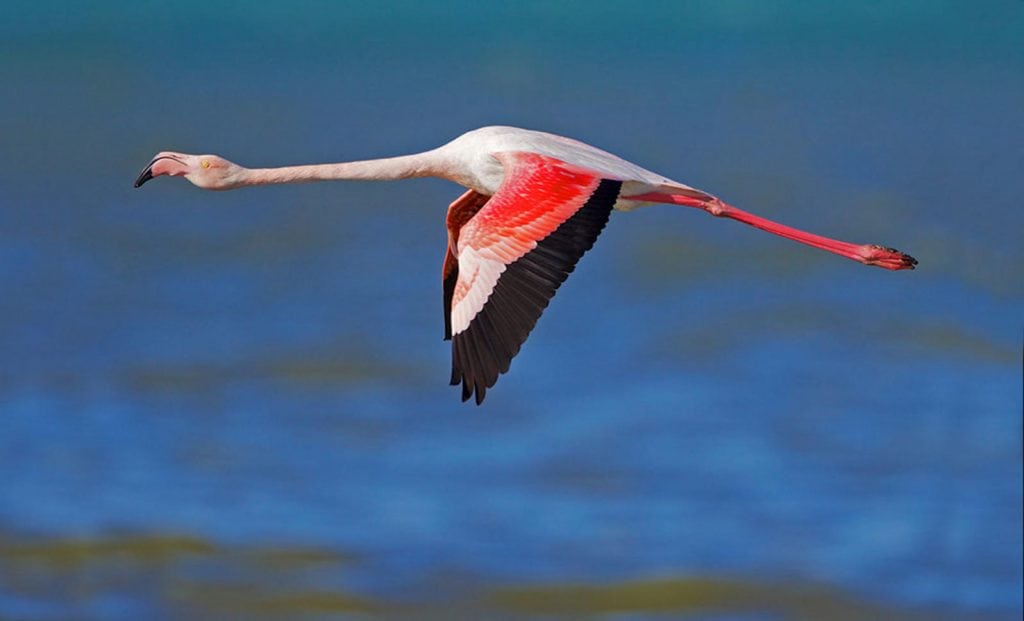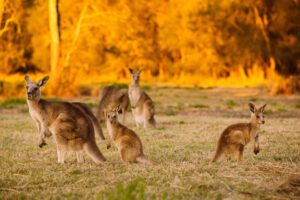Greater Flamingos are found in a variety of saltwater habitats including salt or alkaline lakes, estuaries, shallow coastal lagoons and mudflats. It rarely inhabits areas of freshwater other than using freshwater inlets for bathing and drinking. Greater Flamingos that live outside the tropics often migrate to warmer climates for the winter months.
Water is sucked in through the partly opened bill. As it is squeezed out again by the tongue, a row of spines or lamellae along the edge of the bill filter out the tasty morsels within.

They usually feed with their head fully immersed in the water and they can remain that way for up to 20 seconds. Flamingos pump their tongues up and down, 5 – 6 times per second, pushing the water out of their beak.
Flamingos also feed up on mollusks, plankton, crabs, tiny fish and insect larvae. Plant material is also eaten, including grass seeds and shoots, decaying leaves and algae. The flamingo’s pink colouration comes from its diet of Shrimp and other pink crustaceans.














